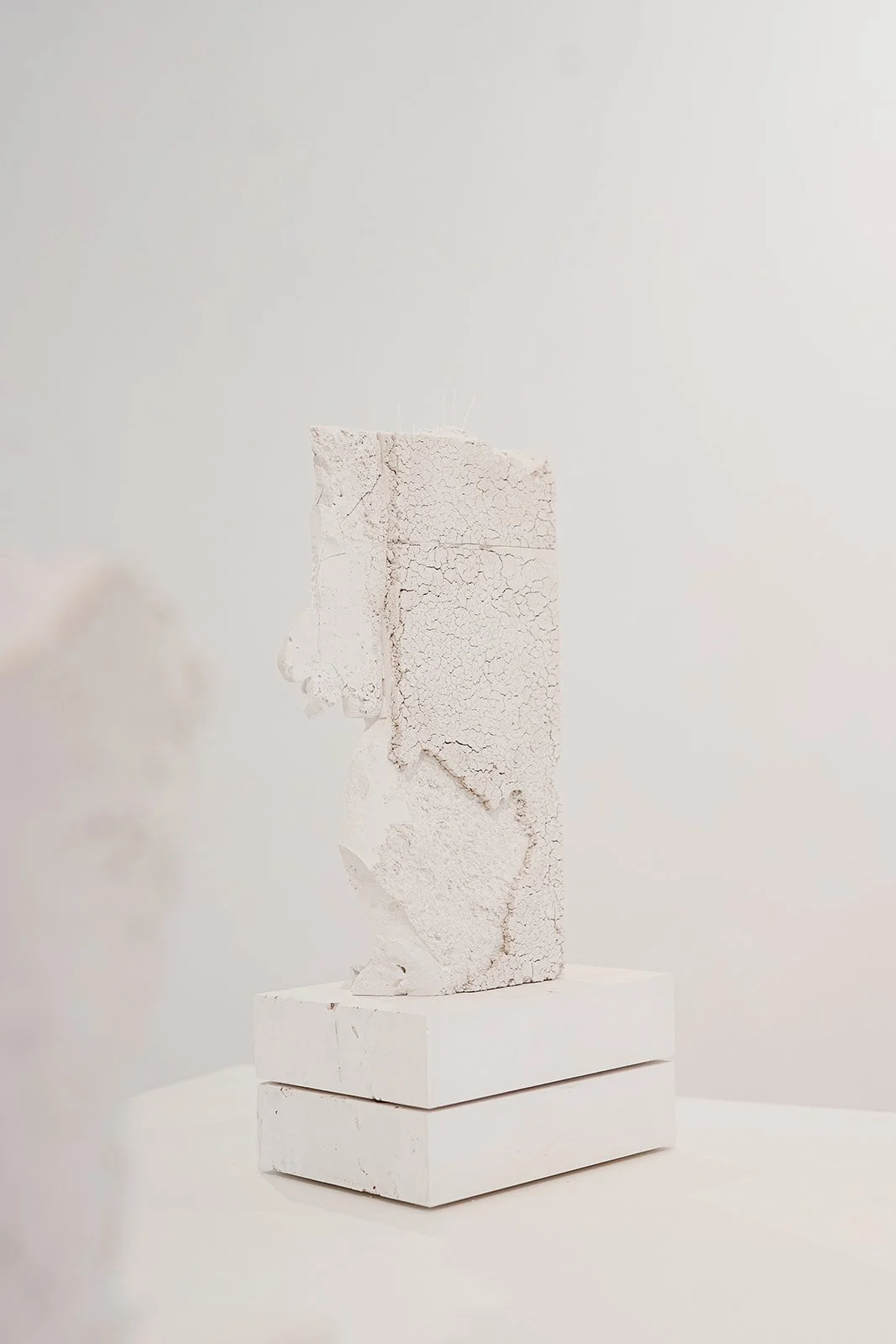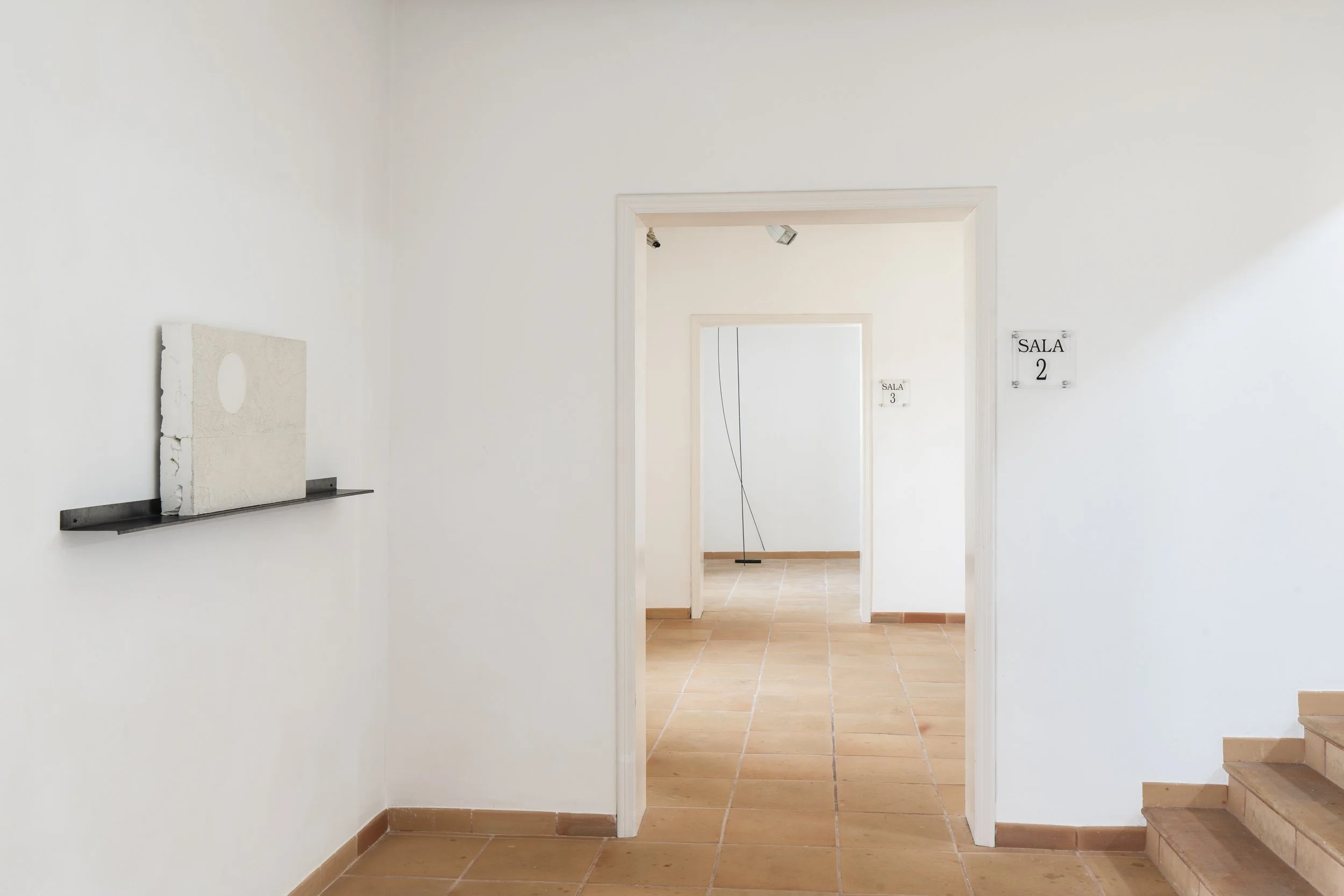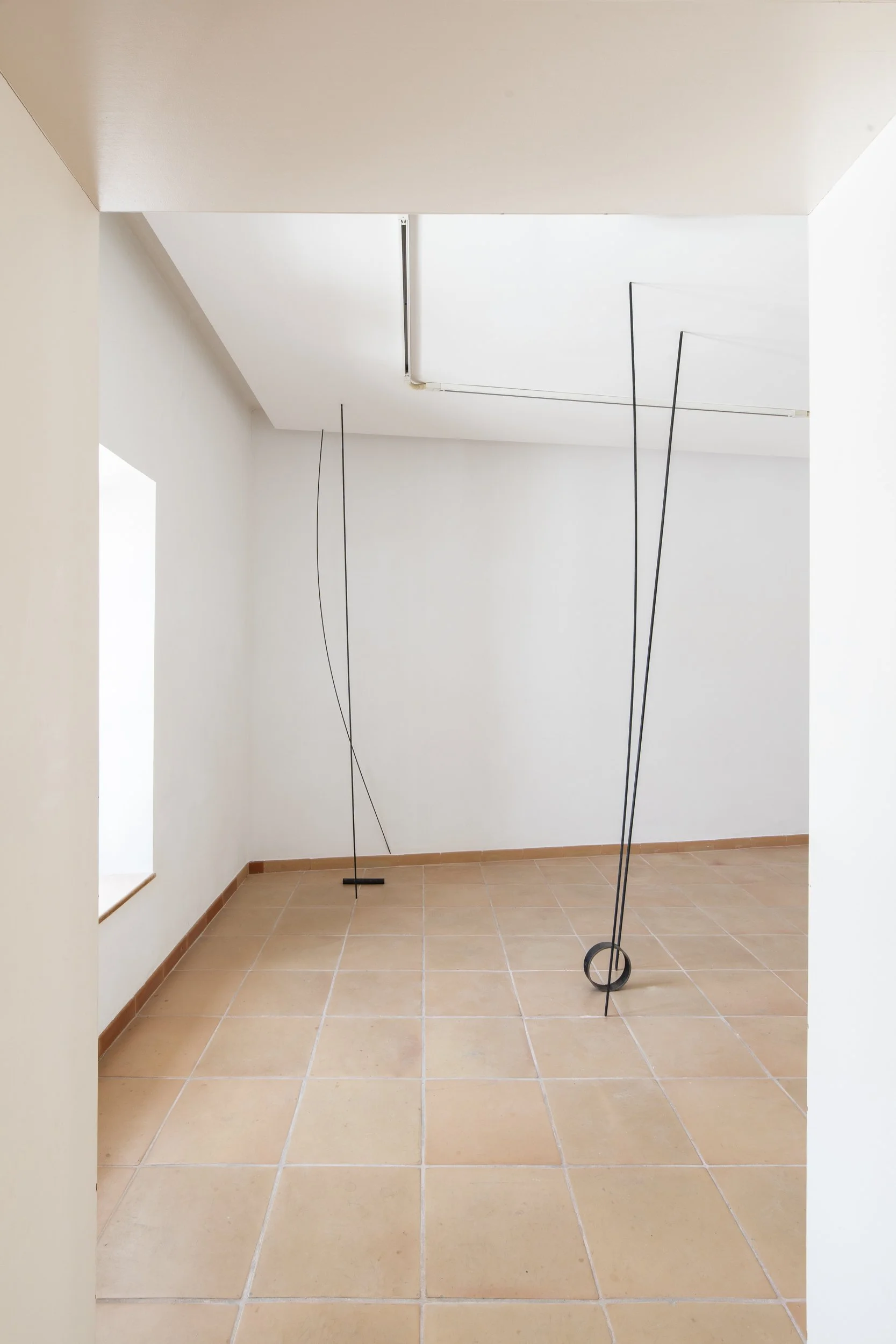Pedazos de espacios
Museo de Porreras. Comisariado por Tomeu Simonet
"Fragmentar para habitar"
En un tiempo que se privilegia la eficiencia, la conectividad y la lógica de la productividad, la obra de Xim Llompart nos invita a una pausa. Sus esculturas e instalaciones, construidas a partir de materiales simples como escayola, acero y melamina, se erigen como una forma de resistencia poética frente al ritmo vertiginoso del mundo contemporáneo. Cada fragmento, cada grieta, cada estructura suspendida o apoyada con aparente fragilidad, nos habla de lo esencial: de aquello que queda cuando todo lo demás ha sido arrasado por el exceso. Las obras distribuidas en las tres salas conforman una topografía íntima de la incertidumbre.
En la Sala 1, la serie Dromotopia y las piezas tituladas Hoja 1, Hoja 2 y Hoja 3 exploran la simbología del dato y la repetición, a través de formas que remiten a pestañas de hojas de cálculo. Aquí, lo abstracto y aquello que nos remite a un campo administrativo o de gestión, adquieren cuerpo, materia, peso. En la Sala 2, con Pedazos de espacios, el artista se adentra en una práctica arqueológica: rescata, resignifica y recompone fragmentos de obras anteriores, generando un nuevo relato desde la ruina. No hay nostalgia, sino una mirada que abraza la fractura como origen posible de nuevas formas de orden. La Sala 3, con Puntos ficticios, propone una experiencia espacial más ambigua. Las líneas tensadas en el aire no definen límites ni direcciones precisas, sino que aluden a la idea de coordenadas posibles, de mapas inventados. El espectador se convierte así en caminante de un espacio mental, en tránsito por estructuras de sentido que nunca terminan de fijarse.
La obra de Xim Llompart no pretende ofrecer respuestas, sino formular preguntas desde el lenguaje del vacío, de la tensión, de la materia y sus ausencias. Sus piezas no solo se instalan en el espacio: lo interrogan, lo habitan, lo reconfiguran. Nos hablan del cuerpo y su fragilidad, del tiempo y su falta de linealidad, del espacio como una sucesión de interrupciones. Como escribió Georges Perec, “vivir es pasar de un espacio a otro haciendo lo posible para no golpearse”. Esta exposición es, justamente, un mapa fragmentario de ese tránsito. Un lugar donde cada fragmento deviene posibilidad, donde las grietas se leen como escritura y donde la escultura se convierte en la caligrafía de lo invisible.
Pieces of Spaces
Museum of Porreras (Mallorca). Curated by Tomeu Simonet
Fragmenting to Inhabit"
In a time that privileges efficiency, connectivity, and the logic of productivity, Xim Llompart’s work invites us to pause. His sculptures and installations, built from simple materials such as plaster, steel, and melamine, stand as a form of poetic resistance against the vertiginous rhythm of the contemporary world. Each fragment, each crack, each structure suspended or resting in apparent fragility speaks to us of the essential: of what remains when everything else has been swept away by excess.. The works distributed across the three rooms form an intimate topography of uncertainty.
In Room 1, the series Dromotopia and the pieces titled Sheet 1, Sheet 2 and Sheet 3 explore the symbolism of data and repetition, through forms that recall the tabs of spreadsheets. Here, abstraction and references to administrative or managerial systems acquire body, matter, and weight.. In Room 2, with Pieces of Spaces, the artist delves into an archaeological practice: rescuing, re-signifying, and recomposing fragments of previous works, generating a new narrative from the ruins. There is no nostalgia here, but rather a gaze that embraces fracture as a possible origin of new forms of order. Room 3, with Fictitious Points, proposes a more ambiguous spatial experience. The lines stretched through the air do not define precise boundaries or directions; instead, they evoke the idea of possible coordinates, of invented maps. The viewer thus becomes a wanderer of a mental space, in transit through structures of meaning that never fully settle.
Llompard’s work does not aim to offer answers, but to pose questions through the language of emptiness, tension, matter, and its absences. His pieces do not simply occupy space: they interrogate it, inhabit it, and reconfigure it. They speak to us of the body and its fragility, of time and its lack of linearity, of space as a succession of interruptions. As Georges Perec wrote, “to live is to move from one space to another doing your best not to bump yourself.” This exhibition is precisely a fragmentary map of that passage — a place where each fragment becomes a possibility, where cracks can be read as writing, and where sculpture turns into the calligraphy of the invisible.









